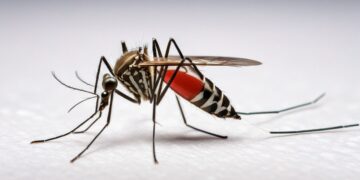- Researchers from Florida have proved the effectiveness of AI in identifying coronavirus in lungs
- A computer algorithm was trained to distinguish Covid virus from influenza virus
- The algorithm was coded in the CT scans of 1,280 patients of China, Japan, Italy
THD NewsDesk, FLORIDA, USA: A recent path-breaking research conducted by the University of Central Florida has demonstrated that artificial intelligence (AI) can be as useful in diagnosing COVID-19 in the lungs as a virtual physician.
The study published in ‘Nature Communications’ suggests a new AI technology that can help in overcoming the challenges of the current method of testing by accurately distinguishing Covid-19 cases from the influenza virus.
The AI is guaranteed to identify positive cases 84% of the time and negative cases, 93% of the time.
“We demonstrated that a deep learning-based AI approach can serve as a standardized and objective tool to assist healthcare systems as well as patients,” said the chief author of the study, Ulas Bagci.
“It can be used as a complementary test tool in very specific limited populations, and it can be used rapidly and at large scale in the unfortunate event of a recurrent outbreak,” Bagci added.
The study was performed by coding the computer algorithm in the CT scans of 1,280 patients from China, Japan and Italy.
After that, they tested the AI on CT scans of 1,337 patients with lung diseases ranging from Covid-19 to cancer and non-Covid pneumonia. The algorithm was confirmed successful in identifying coronavirus in a patient’s lungs with an accuracy rate of 90 per cent.
“We showed that robust AI models can achieve up to 90 per cent accuracy in independent test populations, maintain high specificity in non-Covid-19 related pneumonia, and demonstrate sufficient generalizability to unseen patient populations and centres,” Bagci said.
CT scans are the preferred method of Covid-19 diagnosis and disease progression as they prove to detect coronavirus in asymptomatic cases accurately.
However, CT scans’ precision level is questionable in comparison to the RT-CPR tests because the Sars-COV-2 virus looks similar to influenza-associated pneumonia on the scans.
In contrast, the algorithm was adept at accurately diagnosing Covid-19 pneumonia in the lungs and distinguishing it from other viruses, especially while analyzing CT scans in the early stages of disease progression.























